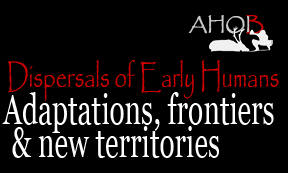
|
About AHOB |
|
|
|
|
|
| (c) 2009, Ancient Human Occupation of Britain Project |  Questions: e-mail pdpolly@indiana.edu |

About AHOB
The Ancient Human Occupation of Britain (AHOB) is a three-phase project to investigate ancient humans from Palaeolithic and Mesolithic northern Europe, funded by the Leverhulme Trust. The third phase, "Dispersals of Early Humans: Adaptations, frontiers and new territories", is funded at £1.1 million and begins 1 October 2009, running for three years after that date. AHOB 3, whose project members come from across Britain, Europe, and North America, has four overriding research themes:
- The record of human dispersal. What is the chronology of human dispersals over the last million years and where were the frontiers of human occupation at different times?
- Natural factors controlling human dispersal. How did the nature of occupation change through time, and what were the factors controlling dispersal into marginal environments: climate, resource availability, and changing geography?
- Population dynamics. Was occupation continuous or episodic, and how viable were human populations at the limits of their range?
- Human responses. What survival strategies were deployed in these marginal situations: seasonal migration, technological innovation, or physical adaptation?
These themes will be addressed in three modules (Figure 1).
Figure 1. The temporal and geographic context of AHOB 3 research modules. [Click here for high-resolution copy].
Module 1: First pioneers in northern Europe. 1.0 - 0.5 million years ago.
Module 2: Neanderthals and the North Sea Basin: Demography and technology, 420,000 - 40,000 years ago.
Module 3: Modern migrants. 50,000 - 11, 000 years ago.
AHOB 3 will take the Ancient Human Occupation of Britain Project through eleven continuous years. The first AHOB project ran from 2001 to 2006, funded by The Leverhulme Trust with £1.21 million (see the AHOB 1 web site). The second AHOB project, which extended the scope of investigation from Britain to continental Europe, ran from 2006 through 2009, funded by The Leverhulme Trust with £900 thousand (see the AHOB 2 web site). Resources and publications produced by the AHOB projects are available on this site.
(c) 2009, Ancient Human Occupation of Britain Project
Questions: e-mail
pdpolly@indiana.edu